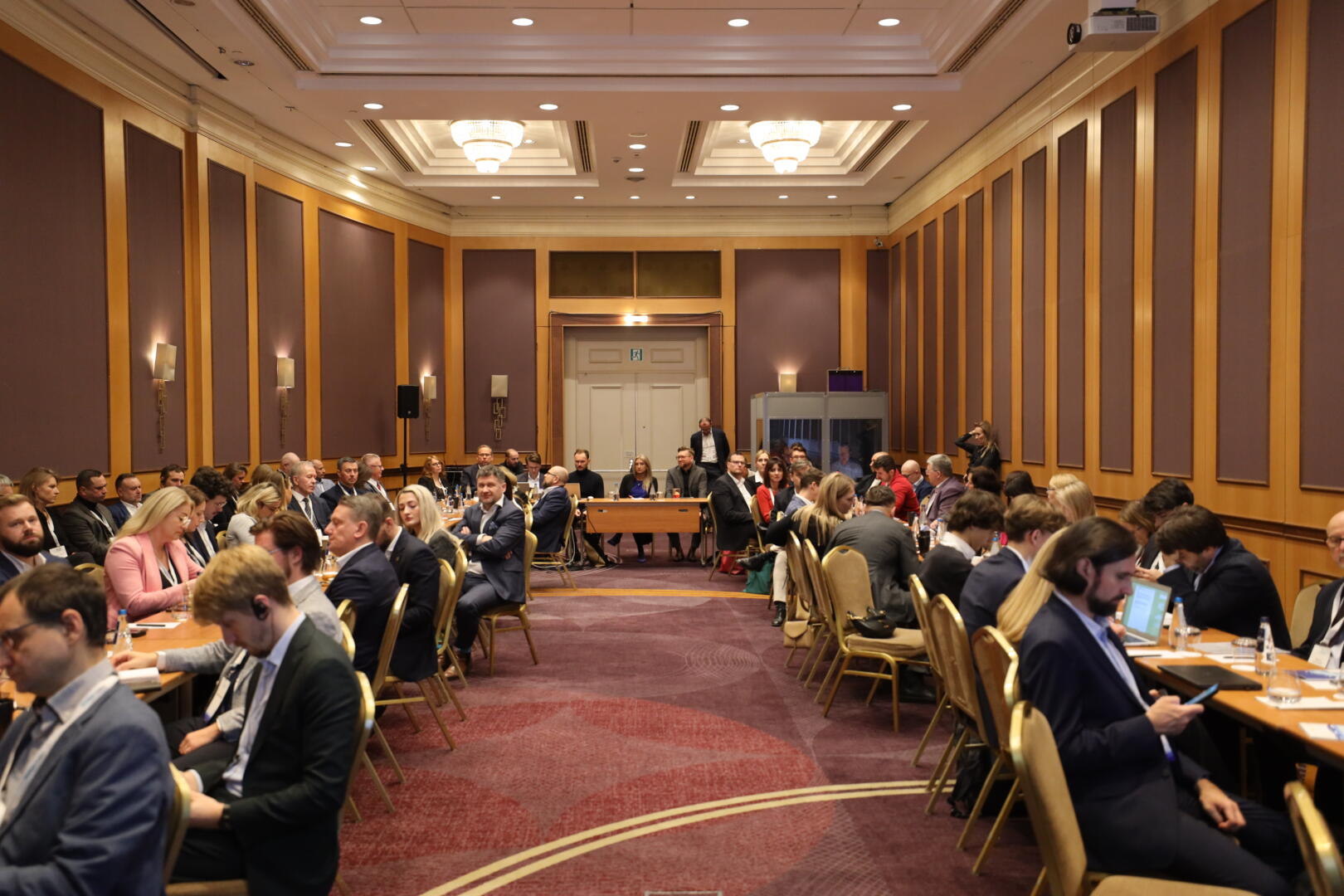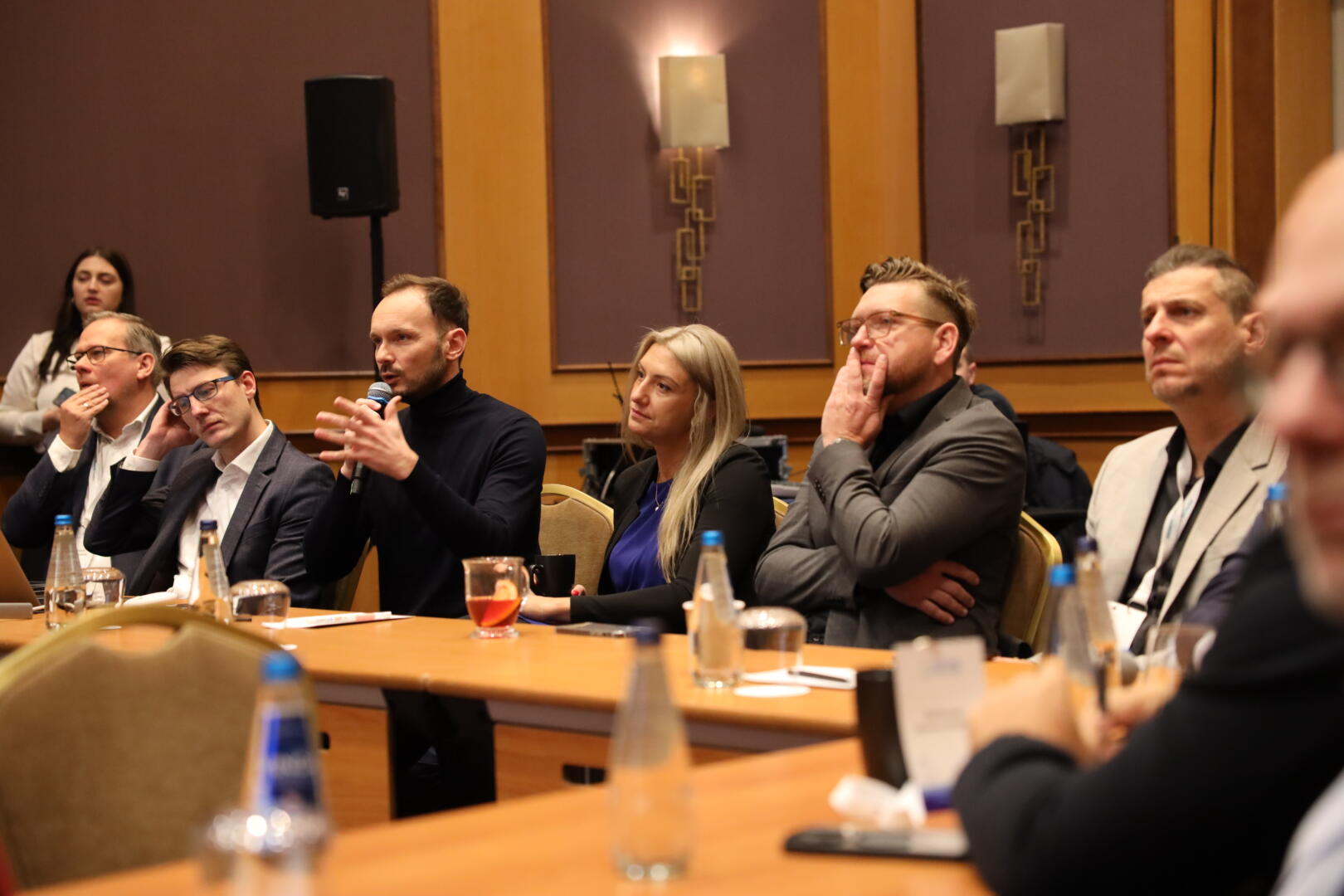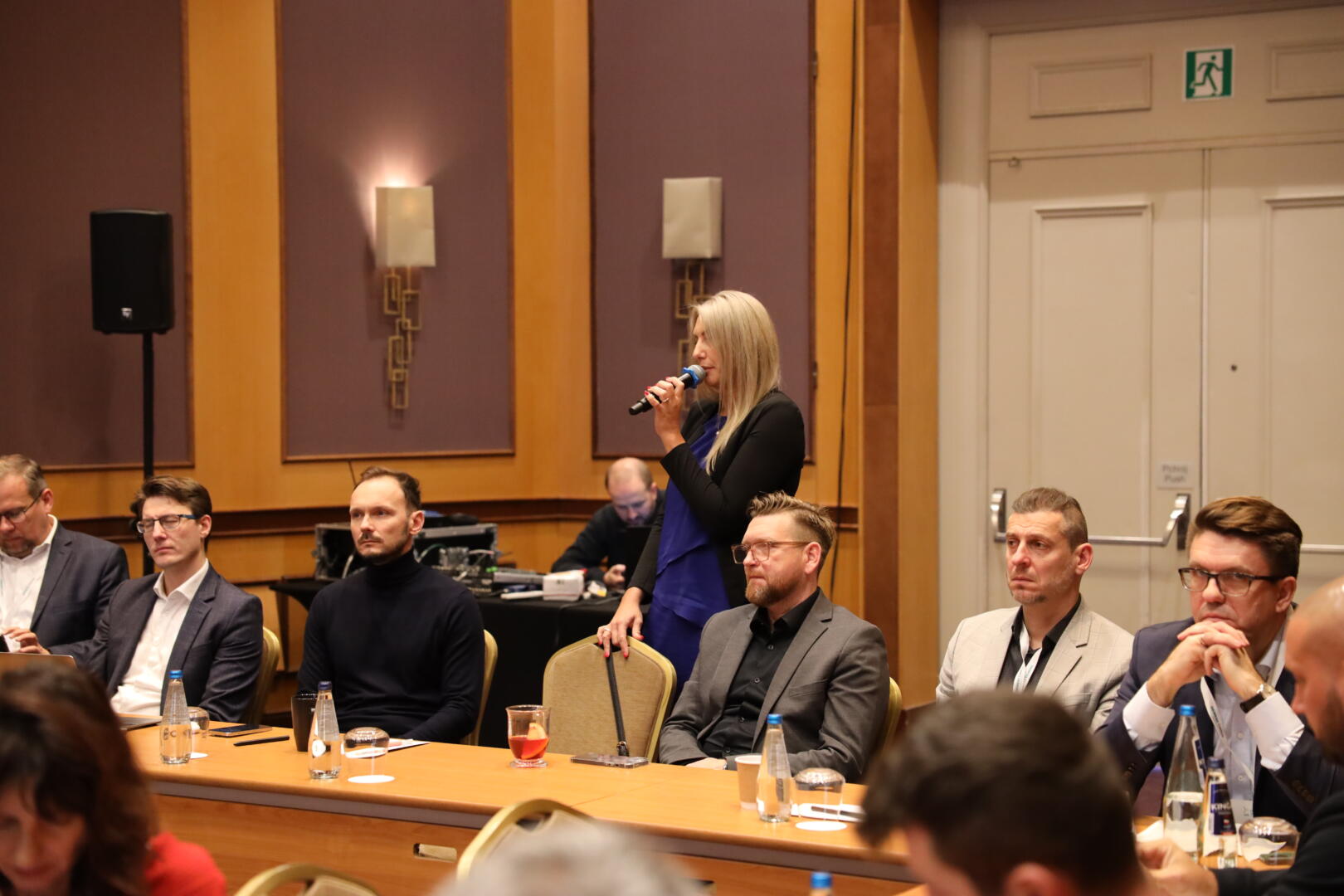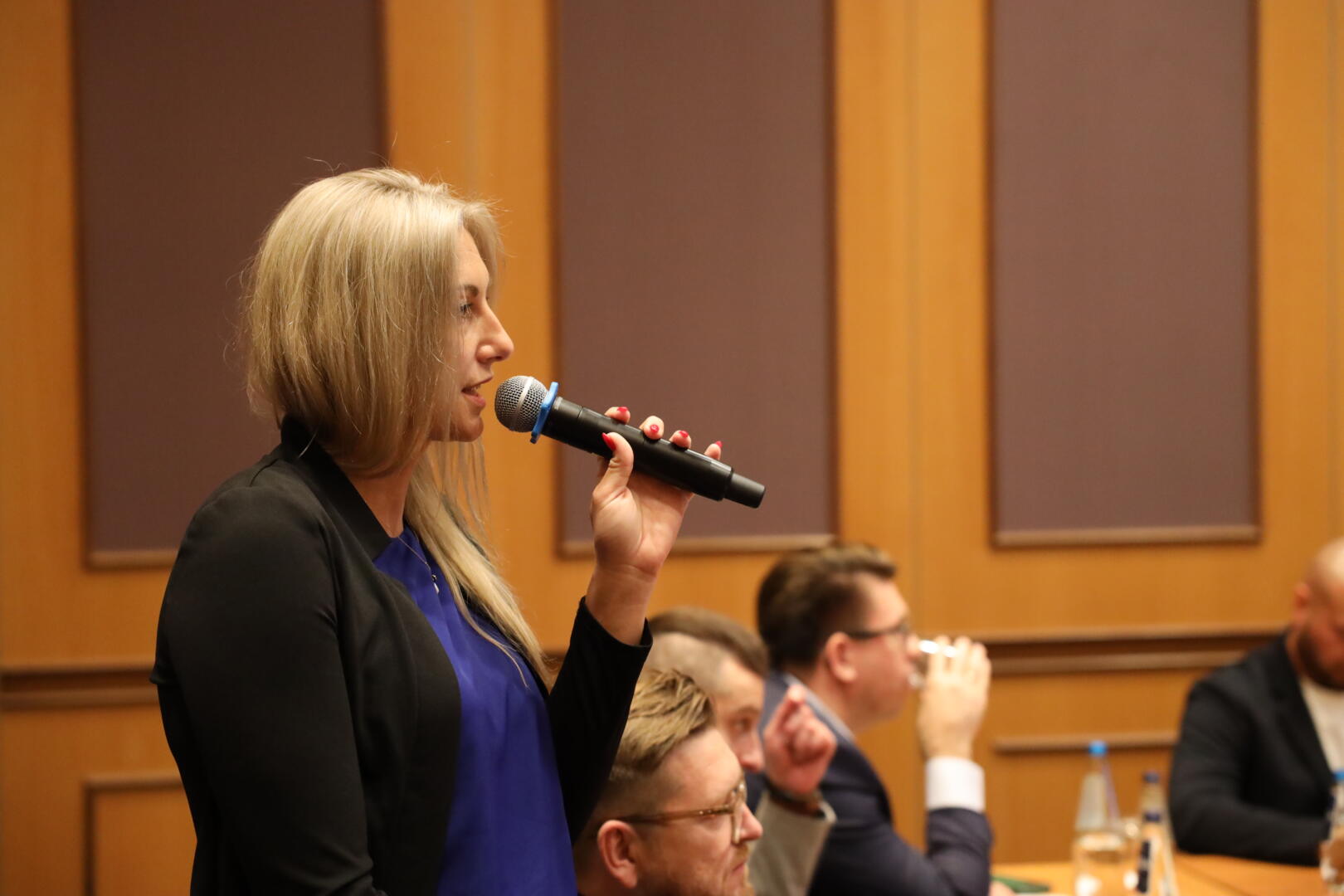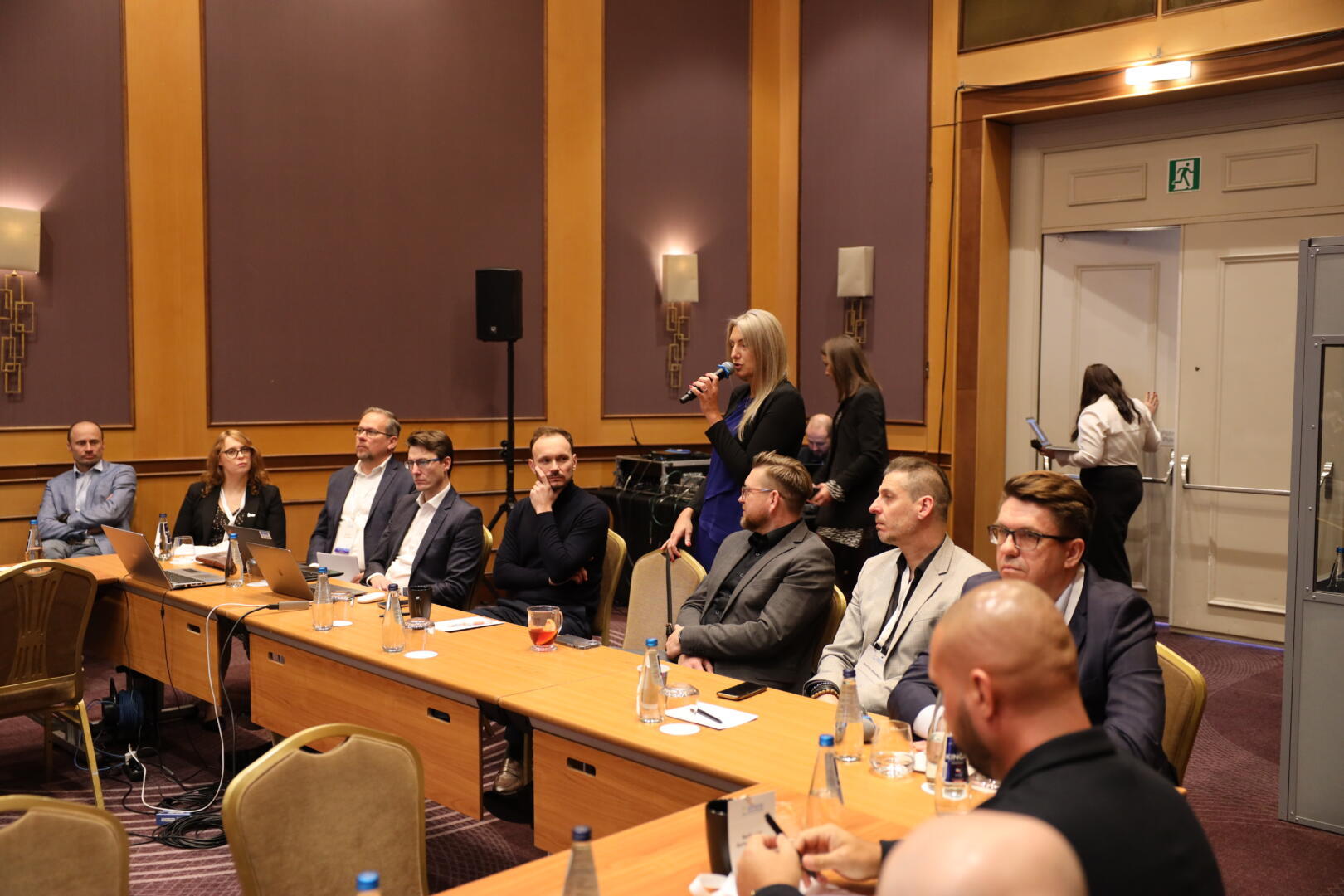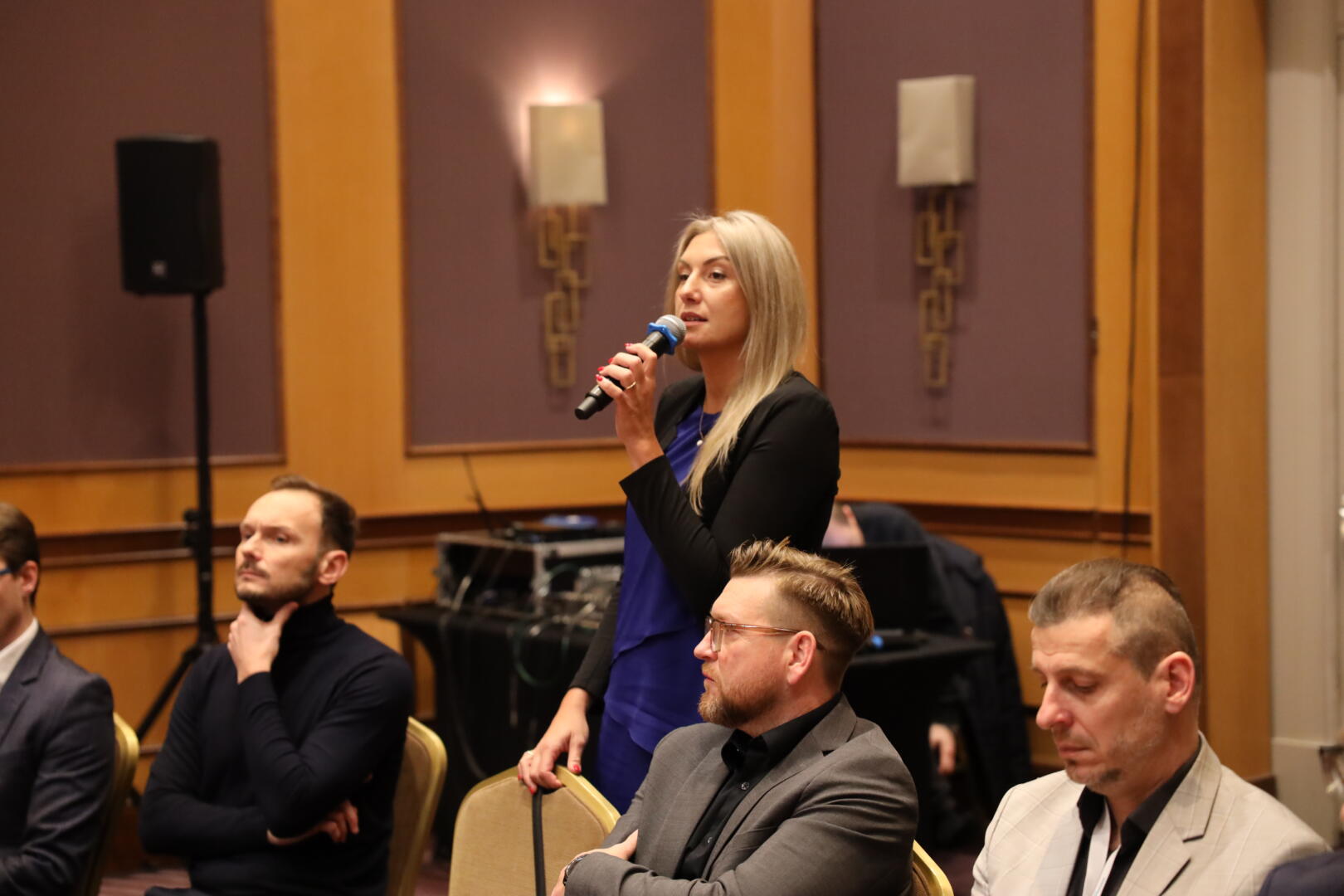The Wind Industry Hub Foundation , together with experts, has developed the “Polish Offshore Wind Farm Industry Development Strategy,” which aims to increase the participation of domestic contractors in OWF projects implemented in the Polish economic zone of the Baltic Sea. The main premise of the document, however, is to turn the wind industry into a flywheel for the Polish economy. The authors of the strategy mapped the ecosystem of the domestic contractor market proposed specific implementation programs, the implementation of which is expected to guarantee the participation of the Polish industry in the global offshore wind energy supply chain.
The prospects for the development of the Offshore Wind Farm (OWF) industry as part of Poland’s industrial strategy were discussed during the second day of The PWEA Offshore Wind Poland 2024 Conference in Warsaw. The starting document for the discussion was the Offshore Wind Farm Industry Development Strategy for Poland, which was prepared by an expert team of the Wind Industry Hub, the Polish Wind Energy Association and CEE Energy Group. During the conference, a summary of the document was presented to launch industry consultations.
In their introduction, the document’s authors stated that the full version of the Strategy includes an analysis of the European industrial base, as well as EU policies that have been evolving to support the new technology industry for about 5 years. This is evidenced by documents such as the Wind Power Package, the Critical Raw Materials Act, the Net Zero Industry Act or the much-discussed recent Mario Draghi Report, treating European competitiveness and commissioned by Ursula vor den Leyen for work in her second term at the European Commission. Mature EU countries are working out their strategies based on these documents, already applying concrete solutions and regulations:
State institutions involved in offshore wind issues, employers’ associations, university representatives and industry representatives have been invited to participate in the market dialogue.
“The intensification of work on industry documents in developed markets in offshore wind is increasing. In individual countries – such as the Netherlands, Germany and Ireland – the discussion is advanced and even concrete measures are already being implemented,” noted Dominika Taranko, Vice President and Managing Director of the Wind Industry Hub Foundation.
Analyses carried out by the authors to create the Strategy clearly show that there is insufficient production capacity for key wind farm components (such as nacelles, blades and towers) in the European Union. In addition, the market for installation vessels and other service units is in a deplorable situation:
“The scale of the shortage is gigantic. Juxtaposing this with the ambitions to increase wind power in the EU, we see that this market will be a producers’ market for years to come.” – said Maciej Mierzwinski, President of CEE Energy Group and member of the Wind Industry Hub Program Council.
During the discussion, it was noted that in Poland today there is a lot of untapped potential in the wind industry. The opportunity for change lies in new investments already underway (e.g. in tower construction). The first phase offshore wind projects in Poland have highlighted the need for further investment in domestic companies that could become Tier 1 suppliers. In order to do so, it will be necessary for manufacturers to obtain financing and guarantees worth more than hundreds of millions of zlotys. Poland has a number of state financial institutions that can – and should – support the development of the sector. The government’s adoption of the Offshore Wind Farm Industry Development Strategy would certainly facilitate the systematization of activities and organization of state support for further projects.
The discussion also did not lack space for the aspect of educating new cadres, who are already in strong demand in the industry. It is worth noting that more than 120 professions related to the sector have been identified:
“We show in the Strategy that it is necessary to go all the way down to elementary schools and show from the beginning what prospects the offshore wind industry brings. Then this generation will enter high schools or technical schools, and then universities. Such vocational pre-qualification is necessary, because the competition from other sectors is also huge. Industry is not responsible for working with schools on a daily basis, although it is already doing a lot on this topic. This is an important task for the Ministry of National Education,” – emphasized Krzysztof Tomaszewski, Member of the Board of Directors of CEE Energy Group.
They also touched on the wind industry’s well-known problem of the lack of a government plenipotentiary dedicated to SHPP, which could make it difficult for the public administration to implement the Strategy quickly:
“Since the beginning of the year, we have been meeting with the ministries involved in the OWF investment program, and there is clearly a lack of coordination. However, we have a response from all ministries that they are interested in the topic, and we will continue this dialogue, and then on the basis of the full document – hopefully implement the recommended solutions.” – added Dominika Taranko.
During the discussion, it was noted that the Strategy shows various scenarios. As Piotr Urbaniec, Director at the Grupa Przemysłowa Baltic stressed, the second phase projects are crucial for domestic suppliers – it is on the basis of it that we will gain references. Failure to conduct the first offshore auction as planned could lead to an investment gap between the end of the first phase and the start of the second. In the case of a scenario where the auction is postponed, there will also be an investment peak, where domestic suppliers will be even less capable of handling such a large volume of orders.
“What we need now is predictability and the most even execution of projects over time,” pointed out Mariusz Wojcik, Director, Offshore Advisory Poland and Baltics, Ramboll Poland.”
According to the discussants, in addition, it is a mistake that Poland is not participating in the EU discussion. We should bring to our EU presidency our own proposal on how the supplier market for wind energy should look like. In the Strategy, the wind industry is divided into 3 groups. The first group are European champions – Poland has huge design capabilities, know-how in shipbuilding, and the Polish manufacturer of onshore and offshore cables can become a leader in the whole EU. The second group are regional leaders – as a rule, countries and politicians do not allow shipyards and ports to stand empty, as they are not only the hearts of trade and large-scale production, but also have a strategic location and importance for economies. The third group is very difficult to discuss at the Polish and European level, as it concentrates the part of industry that has “departed” from Europe – including the shortage of steel, or rare earth metals. The EU will not be able to catch up with the lack of production capacity in these areas for the next few years. In the case of the last group, there is a need to globally diversify the supply chain, but with a defined European share.
An important element discussed in the discussion was sources of financing for industrial investment. Finances from the National Reconstruction Plan were identified as the most obvious ones, but which – so far – leave out the supply chain in the national scenario. Another source should be the funds Poland receives from the EU ETS emissions trading system – a report by the Supreme Audit Office indicated that 94 billion zlotys went to the treasury from 2013-2023. Unfortunately, of this money, only 1% of the funds actually used to reduce greenhouse gas emissions and manage emission systems were found. The report shows that the rest of the funds were used legally, but for purposes mostly not supporting energy transition processes.
In the discussion, Szymon Zolcinski, Partner at Crido, stressed that support pograms should be as simple as possible, as the money does not need additional complications and should respond to the actual problems of entrepreneurs. It was also noted that one of the better programs launched recently, the TCTF formula, has very high entry thresholds in the domestic market, reaching min. 110 million euros in eligible costs, which is a barrier for most industrial players in Poland.
According to the attendees, excellent potential in the implementation of the Strategy exists in the shipbuilding industry, in the production of ships. In their case, Poland’s rich know-how comes into play, which, however, has to be confronted with the problem of large capital expenditures and high competitiveness of non-European manufacturers. However, faced with the risk of a shortage of ships n the market, with the planned construction of 18 GW of OWE capacity in Poland, as well as the announcements by Deputy Infrastructure Minister Arkadiusz Marchewka about starting work on updating the Spatial Development Plan for Polish Maritime Areas, such activities are even more important for the national economy:
Ships today, unfortunately, are mainly built outside the European Union, because they are cheaper by about 20-30%. In order for the shipbuilding industry to return in Poland we should find a system that offers support to take off the risk of non-competitiveness. We need to expand the cooperation of European champions. This is the only way to fulfill the promise that the domestic shipbuilding industry can build these ships. This is a difficult project. But potentially with very high returns for the economy – it will pay off for us in the long term. In Poland we have at least three places where we could build a suitable fleet.” – emphasized Maciej Mierzwinski.
During the discussion of the Polish Offshore Wind Farm Industry Development Strategy , many threads came up, including those at first glance not strictly related to the industrial sector. It became clear from the debate that the process of strengthening local content is not only infrastructure investments, recapitalization of companies and production, or EU aid. It is, as Oliwia Mróz-Malik, Director of Offshore at PWEA, stressed, also support for innovation, education, creation of future human resources and ensuring energy and physical security for the entire country.
Among the Strategy’s 10 activation packages, the document’s authors recommend implementing the document as early as 2025 and appointing an Offshore Commissioner. The Strategy, in the form of an expert draft, will be subject to further consultations with other stakeholders in the near future, in order to be able to develop solutions that are optimal for all social groups.
Participants in the Consultation included Senator Janusz Gromek, Member of the Senate Committee on the Environment, and Prof. Dr. Eng. Mr. Piotr Kacejko. The meeting and discussion was attended by representatives of the industry, including the Chairman of the Board of the Reform Institute Mr. Aleksander Śniegocki, Members of the Pomeranian Offshore Platform, CRIDO Partners, CEO of CSL Sp. z o.o. Laura Holowacz. Key contractors like Siemens Gamesa and Orlen Group offshore wind farm developers also spoke. The meeting had the opportunity to host representatives of the Marshal’s Office of Pomorskie Voivodeship and the Danish Embassy in Poland.


